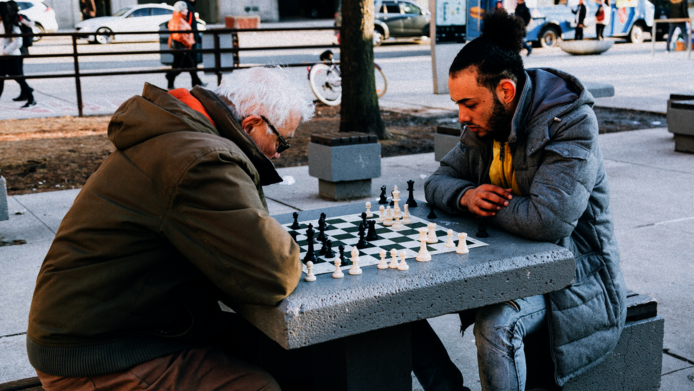“Social contacts are a buffer against constraints”

Why do some people find it harder than others to lead an active social life in old age? The reasons are manifold, including reduced mobility, loss of friends and acquaintances, health issues or increasing poverty. The corona pandemic highlighted this problem when it led to older people being isolated more or less overnight. Although the corona regulations were notably designed to protect the elderly, designated as a risk group, restrictions on venturing away from home, bans on visits and a lack of care had dramatic effects on people aged 65 and over – in Austria this equates to some 20 percent of the population.
Intact social life particularly important in old age
“Social exclusion is a multifaceted problem with profound consequences for those affected, but also for society as a whole,” confirms Anna Wanka. This sociologist at the University of Vienna, who specialises in research into ageing, is currently working on the international GENPATH project, which receives funding from the Austrian Science Fund FWF and focuses on the quality of life and social integration of people beyond their working lives. “At that stage in life, a functioning social life becomes even more central as a factor for health and well-being,” explains Wanka. Research teams from six European countries plus Israel are currently evaluating longitudinal data, including elements from the Survey of Health, Ageing and Retirement in Europe (SHARE) which regularly collects data on health, socio-economic status, and also on social and family networks of people aged 50 and over. The last such complete survey dates from 2018. In the GENPATH project, the survey data will be supplemented by in-depth qualitative interviews.
Focus on country comparisons, gender aspects and phases of life
Social exclusion among older people varies across Europe, with a gradient running from Eastern European countries to North-Western Europe. The range is wide, from 10 percent in Germany to 52 percent in Bulgaria, as data surveys on late-life loneliness reveal. On average, the rates found among 70-80 year-olds are twice to three times higher than among young adults aged from 18 to 30. “Why the differences are so pronounced between individual countries is something that has been little investigated so far,” notes Anna Wanka. Another aspect that is often ignored is that of gender, which is a central focus of current research in GENPATH. The GENPATH project investigates how social exclusion in old age differs as between men and women and to what extent this is influenced by the different welfare systems and concomitant gender images – from conservative to progressive. The project’s hypothesis is that the foundations for social exclusion in old age are laid throughout the entire lifespan, with factors such as (gender) norms and values playing a central role. “We know that there is less exclusion in better developed welfare states,” explains Wanka who adds: “Individual life situations and the way they develop are directly linked to society, which in turn determines gender paths.” Consequently, there are also large gender differences between individual countries in terms of satisfaction and inclusion, whereby Austria lies in mid-field according to Wanka. “In Austria, the powerful lobbies of old-age pensioners play a decisive role. As a result, senior citizens enjoy a relatively large array of services and significant support measures, from leisure activities to assisted living.”
Women more frequently affected
“Social contacts increase satisfaction and are a buffer against many constraints in old age,” Wanka points out. She also notes that society would lose a lot of potential if older people were to be assessed across the board as deficient (restricted faculties, prone to illness, unproductive) or, in extreme cases, even isolated as a “risk group”, as witnessed during the Corona pandemic. Overall, women are more often affected by social disadvantage, since elderly women of the current generation have on average a lower level of education, often have precarious and patchy employment histories and, thus, receive lower pension benefits. At the same time, they have a greater life expectancy, which means that older women find themselves more often without a partner and live alone. However, it is also important to take account of the subjective views of the older generation – not every elderly person living alone is automatically lonely. That is why interviews with individuals concerned are a major part of the study, but have been interrupted at the moment because of the corona crisis, as Wanka reports. The researchers hope that the country comparisons will furnish important insights that will also serve as a decision-making basis for policy-makers. Countries like Sweden, for example, show that investments in equality pay off. Wherever gainful employment is more balanced between women and men, high quality of life and health are more likely to be maintained into old age. “Having enough opportunities to maintain social contacts over the course of a lifetime is crucial,” says Wanka. One prerequisite for this is sufficient leisure time, which has become all too scarce in these days of turbo work and profit maximization.
Personal details Anna Wanka is a sociologist who specialises in the sociology of ageing. She holds a doctorate from the Department of Sociology at the University of Vienna and is currently working towards her professorial qualification at the Goethe University in Frankfurt. She is a research assistant in the European ERA-Net project GENPATH, which is supported by the Austrian Science Fund FWF and runs until 2021.
Publications





